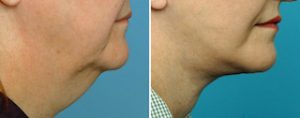There are certain procedure names in plastic surgery that immediately conjure up in public perception as to what it is. Aesthetic procedures such as rhinoplasty, breast implants and liposuction leave no doubt as to what they accomplish. The name alone speaks for what it does and there is little room for interpretation as to the physical changes that are intended.
But not all plastic surgery procedures are as obvious even if their names are very familiar. The best example is that of a facelift. Every single adult alive knows the name and understands what it is…but most would be wrong. The term ‘facelift’ conveys a wide range of anti-aging facial effects. It is an operation that has many working parts and is highly modifiable. Many plastic surgeons (and companies) have their own technical variations within the facelift operation and some even give such their own facelift names.
But the fundamental concept of a facelift lies in its name and history. Its original name that some plastic surgeons still use is rhytidectomy. Literally translated this refers to the excision (cutting out) of facial wrinkles. In the earliest of times a facelift (as early as 1901) was a small operation that just removed some loose skin in front of the ear. Calling this a facelift was a bit of a magnaminous term since it had a very limited effect of tightening at the side of the face. The term rhytidectomy was far more appropriate as it truly described what it accomplished.

Facelifts are confusing because the name implies that the entire face is changed from the forehead down to the neck. And many people have seen patients right after surgery that had a ‘facelift’ where they were swollen and bruised from the top to the bottom of their face. Or they have seen someone in real life or in magazines or TV that had an odd overpulled look because they had a bad ‘facelift’. While the face may have been surgically changed, these represent facelifts that have had numerous other procedures done at the same time, such as eyelid lifts and browlifts, to create a more complete facial rejuvenation effect. (well done ‘complete’ facelifts should not look overdone)
Some patients get only an isolated facelift while others have a more complete facial rejuvenation procedure. It depends on what their facial aging concerns are and what facial changes are most important to them. But the outcome, cost, recovery and risks between a facelift or total facial rejuvenation procedures are quite different. Additive procedures such as fat injections for volume enhancement and laser and skin peels for skin smoothing and wrinkle reduction can be done with either facial anti-aging approach.
Dr. Barry Eppley
Indianapolis, Indiana


